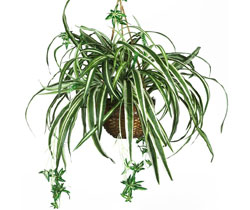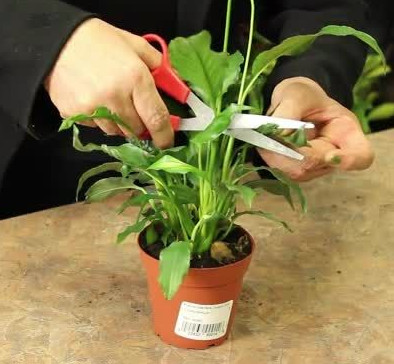Typically, the peace lily is a durable and hardy indoor plant, with long and dark green oval-shaped leaves narrowing to a pointed tip.
It says a lot about a plant when its biggest problem is dusty leaves that need to be wiped off every so often.
If the edges of your peace lily leaves turn a sickly yellow, brown or black colour, the root of the problem is usually water-related. But is the discolouration due to too little or too much watering? Or the type of water you use? Or is there some other cause? Let’s narrow it down.
There’s Something in The Water
Tap Water
Since peace lilies are primarily kept indoors as houseplants, they are usually given tap water. If you have hard water in your house, a calcium buildup in your plant’s soil may be to blame for the browning of leaves.
Minerals
Your plant needs some minerals, yes, but too many minerals can build up around your plant’s roots and slowly suffocate your plant. Keep those waterways unclogged. Investigate the water as a suspect even if you use a water softener.
Watering Schedule
Over-watering and under-watering can cause leaves to wilt and the leaf edges to turn yellow or brown. Your container should have a drainage hole in it so the pot will not hold water. Soil that has been kept too dry will often pull away from the sides of the pot. Use a growing medium that is well drained, and water to keep the plants evenly moist while growing and flowering.
Treating a Peace Lily with Brown Tips Caused by Tap Water Problems
Mineral Buildup
If you can see white deposits around the container drainage holes in the bottom, mineral buildup is likely the problem. Browning Spathiphyllum leaf tip problems are relatively simple to clear up.
If you have a peace lily with brown tips, try watering it with bottled or distilled drinking water.
First, flush the plant with lots of bottled water until it runs out of the drainage holes. The minerals will bond with the water and wash away with it. After this, water your peace lily as before, except with the mineral-free water, and your plant ought to recover just fine.
Chlorine
Peace lilies can be sensitive to chlorine. If your municipal water system is heavily chlorinated, fill a container with water and allow it to stand overnight to allow the chlorine to evaporate before watering your plant.
If you can, install a water distiller or reverse osmosis purification system for watering (and drinking!).
Other Reasons the Edges of Peace Lily Flowers Turn Brown or Yellow or Black
Discoloured tips and edges on peace lily leaves are also signs of excessive fertilization.
Proper Fertilizer for Peace Lily
Use a balanced ratio, such as 20-20-20, diluted to one-half or one-quarter strength. Be sure to water after feeding your peace lily to scatter the fertilizer evenly around the roots. Never apply fertilizer to dry soil, which may burn the plant roots.
If the flowers are a little green around the gills instead of creamy white, you are probably overdoing the fertilizer. Either cut back or dilute the concentration.
Temperature Too Chilly
Peace Lilies can sustain cold injuries caused by draughts or temperatures below 40 degrees Fahrenheit.
Cut The Brown Tips From the Leaves
If your peace lily develops brown or dry tips on some of its leaves, go ahead and trim them away. Even healthy indoor plants can develop unsightly brown spots or, in particular, brown leaf tips. Snipping brown tips with (sterile) scissors can provide cosmetic improvements for your plant, but you should also identify and deal with the underlying cause of the brown tips, as explained above.
Remove the Entire Leaf?
Remove the whole leaf only if most of it is brown. Leaves with small brown areas along their edges or tips still produce energy for the plant through photosynthesis. However, if a leaf is almost entirely brown and dry, then it’s not producing energy and can be removed entirely by cutting it away.
- If more than half of the leaf’s surface area is brown—and especially if it’s at least two-thirds brown—then it’s a good candidate for full removal.
- The preferred way to remove a whole leaf is to cut the base of its stem with sharp scissors. Alternatively, you can pluck it by pinching the base of the stem between the nails of your thumb and index fingers.
Illustrated guide to How to Remove Brown Spots from the Leaves of Houseplants
Removing Brown Tips While Retaining the Leaf Shape
For aesthetic or cosmetic purposes, cut away the dead brown area mimicking the shape of the leaf — in the case of the peace lily, your cuts will be at sharp angles to create a point. Cutting straight across will not hurt your plant, if you’d prefer to cut away as little of the green healthy areas as possible.
Alternatively, some gardeners recommend cutting away most of the brown along its healthy edge but leaving a line of the brown, thus your cutting does not end up wounding the leaf further. This is a viable option too, although not as pretty-looking.



